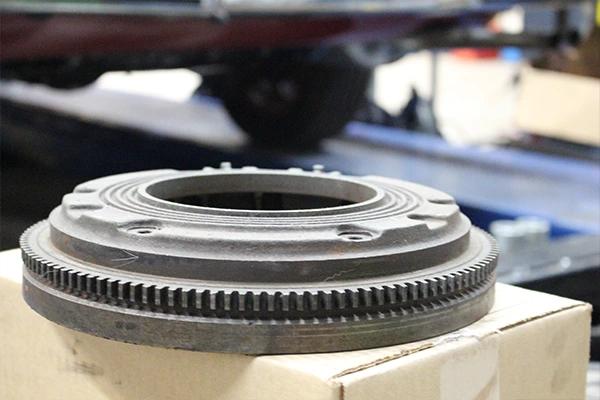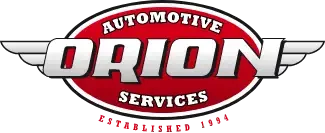Flywheel vs. Flexplate: What’s the Difference?
Both vitally important components in transmissions, the terms flywheel and flexplate are sometimes confused with each other. While both look alike and accomplish similar tasks, these components have some major differences that set them apart.
What is a Flywheel?
In a manual transmission vehicle, the flywheel is attached to the engine and driven directly from the crankshaft. The flywheel is connected to the clutch, which is the component used to engage and disengage the engine from the transmission. Clutches use abrasive pads, similar to brake pads, that “grab” the flywheel while engaged and transfer power to the transmissions.
The beauty of a flywheel is that it allows the vehicle to store kinetic energy from the engine even while the clutch is detached. This is accomplished through the rotational mass of the flywheel, as the heavy metal disk will maintain its rotating inertia while the clutch is disengaged. Keeping the flywheel spinning at a smooth and constant during shifts is crucial for fluid shifts as the clutch is pressed

What is a Flexplate
Flexplates accomplish a similar thing as flywheels, connecting the engine’s output to the transmission. In a broad sense, they’re the automatic equivalent of a flywheel. While flywheels are almost exclusively used in manual transmissions, flexplates are instead found on automatics.
One of the main differences between the two is that flexplates don’t rely on a clutch to engage. Instead, automatic transmissions use torque converters. These torque converters use fluid coupling to transfer power to the flexplate, essentially using an impeller and a turbine to transmit forces back and forth to each other through fluid, coupling the two together. Since torque converters can couple and decouple fluidly, they eliminate the grinding of clutches. Flexplates are most often found sandwiched between the crank and torque converter in automatic transmissions.
Similar to flywheels, flexplates are used to store kinetic energy from the engine and deliver it smoothly to the transmission. Because the firing order and combustion cycle of engines don’t happen simultaneously, the power delivery from the crankshaft won’t be smooth and uninterrupted. This is mitigated through the use of a flexplate, as it will always be spinning at a smooth and constant rate unaffected by the engine’s inconsistency.
The “flex” in flexplate is another major difference between the two. Though torque converters bring some great benefits, they have the side effect of imperfect connections between the crank and transmission. Flexplates are much thinner than flywheels, allowing them to bend and adjust to these misalignments. A more rigid disk, like a flywheel, would crack due to these slight movements along its main axis.
Transmission Services in Ann Arbor
Whether you drive an automatic or a manual, the transmission experts at Orion Automotive Services in Ann Arbor have the training and tools to properly service your gearbox. No matter if it’s just a fluid flush or something more involved, like a rebuild, our technicians will ensure your vehicle is operating at its best.
Give us a call or schedule an appointment online today. Our team is looking forward to taking care of you and your vehicle!

